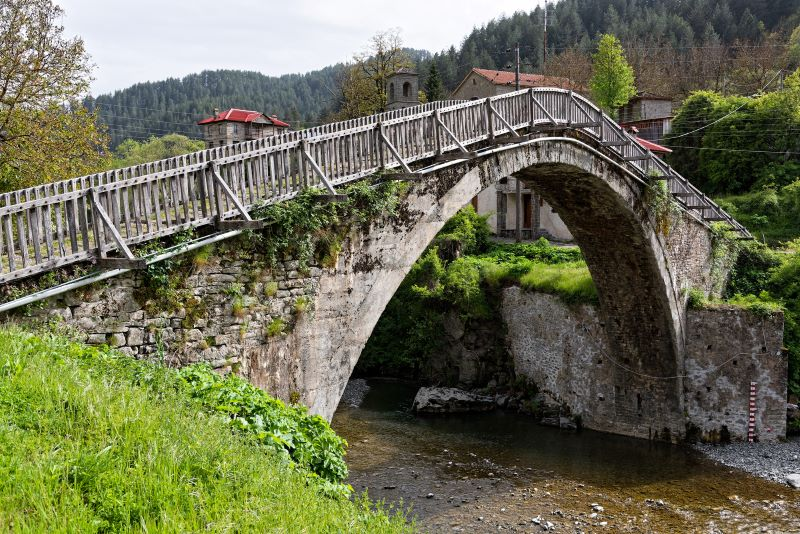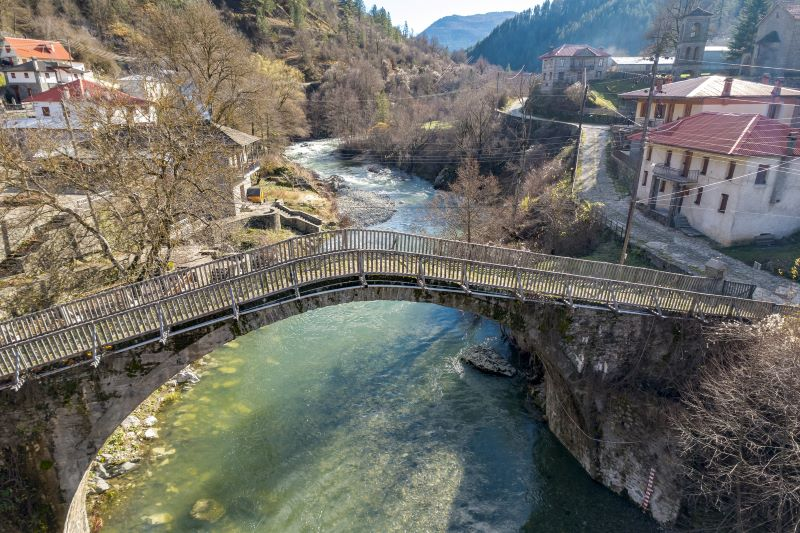Nestled on the eastern edge of Zagori, in the shadow of the alpine North Pindos mountains, lies a storybook village with the Vlach name Baiasa, better known today as Vovousa.
This enchanting spot is also one of the main gateways to the Valia Calda National Park. Here, where Epirus brushes against Macedonia, you’ll find Vovousa tucked within a lush valley surrounded by dense, impenetrable forests of beech and fir — the easternmost Vlach-speaking village in Zagori.
Perched at an altitude of 1,000 meters, Vovousa owes its name to the resounding roar of the Aoos River that cuts directly through the village, literally splitting it in two. In old Vlach, “Voiousa” means “the roaring one” — a fitting tribute to the river’s powerful flow.
A Village Born from Four
According to tradition, Vovousa emerged from the merging of four smaller hamlets, with its roots tracing back to the 10th century when Vlach shepherds began migrating through the Pindos villages. For centuries, locals made their living from livestock farming, trade, and transport.
depositphotos
Back then, about 150 families called Vovousa home. But from the early 19th century onwards, the village entered turbulent times: raids by bandits, a devastating epidemic in 1814, and the pillaging by Ottoman troops in 1829 all took their toll, leading many families to resettle in Macedonia and Thrace. The village, like much of the surrounding region, went into decline.
War, Ruin, and Rebirth
Vovousa’s troubles didn’t end there. In 1940, during WWII, it once again found itself in the crosshairs of conflict and was completely destroyed on October 23, 1943. After the Greek Civil War, the village slowly rebuilt into the form visitors see today. Its few remaining residents turned to logging and woodworking to sustain their livelihoods.
depositphotos
The Iconic Bridge — A Symbol of Unity
Vovousa’s defining landmark is its magnificent stone arched bridge, which has stood proudly over the rushing Aoos since 1748. This bridge permanently connects the two neighborhoods on either side of the river and once served as a vital passage between Epirus and Macedonia. Built by Alexis Misios from Monodendri, it is the oldest bridge in Zagori still in use and is now protected as a modern historical monument.
A River that Sings and a Festival that Celebrates
depositphotos
The sight of the Aoos splitting the magical village in two stays etched in every visitor’s mind, while its constant roar accompanies every aspect of daily life for the village’s humble yet noble residents. This deep bond with nature culminates each summer in the village’s highlight event — the Vovousa Festival.
depositphotos
Dedicated to environmental protection, the festival brims with activities that promote sustainability and celebrate the unique natural and cultural heritage of Northern Pindos. Expect live music, theater performances, guided hikes, herbal therapy workshops, and events exploring the region’s intangible cultural heritage and oral history.
depositphotos
depositphotos
Discover the magic of Vovousa through the videos by Travel Inspiration and Greek Village Life below.
















